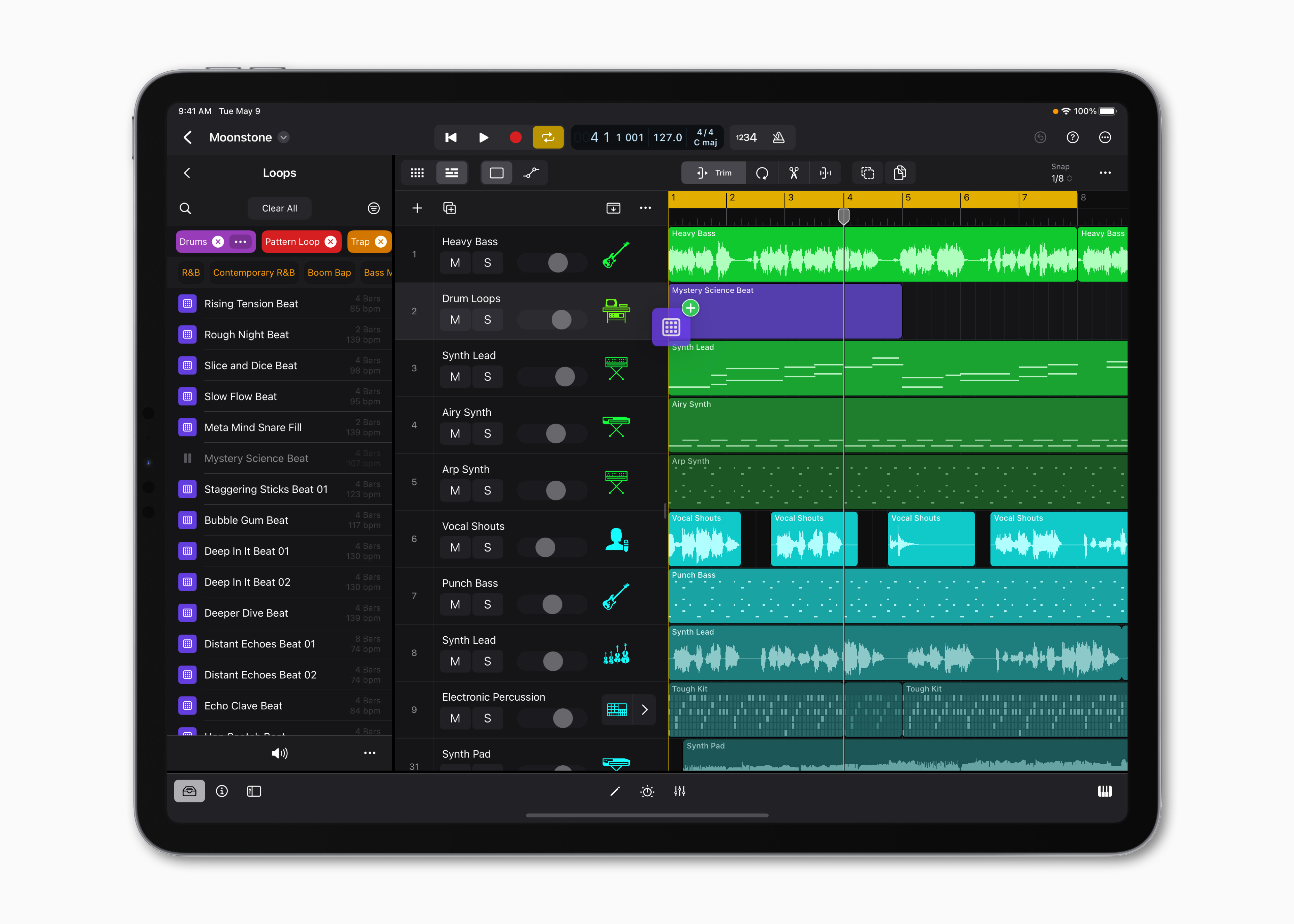For years iPad Pro owners have complained that the “Pro” is definitely evident in the materialbut the software is consumer-grade, making the high-end tablet a very expensive way to run iPad apps that already run as fast as you want on much more affordable iPad models. It’s gotten better in small steps over the past few years, but the iPad Pro still doesn’t feel like a Pro device, and that’s a software issue.
The most obvious example is the absence of Apple’s professional content creation software from the platform. Now, with the release of Final Cut Pro and Logic Pro for iPad, it’s a little easier to justify the “Pro” in iPad Pro.
A real professional software
I’m in no way a professional video editor or sound engineer, so I can’t tell you if the iPad version of these apps will meet the needs of these types of content creators. But I know enough about these two things to clearly see that after several days of use, they are a far cry from iMovie and GarageBand.
Final Cut Pro requires an iPad with an M1 processor, and it’s easy to see why. It has no problem chewing up multiple layers of 4K HDR footage and includes nifty features like real-time multicam editing controls and the ability to shoot new footage with the iPad camera right in the app (with lots of new controls for resolution, frame rate, white balance and exposure).

Apple
Nifty features that rely on machine learning include Scene Removal Mask, which can extract the subject from the background so you can easily layer it on top of titles and such without a ton of masking work , voice isolation to clean up audio with lots of background noise, and automatic cropping to produce video in different aspect ratios (like vertical video for social media) while keeping subjects in the frame.
Logic Pro is much more forgiving, only requiring an A12, meaning it’ll run even on a basic 8th-gen iPad. Still, it has a lot more to offer than GarageBand. Ten minutes later, I found myself stepping out of my depth and marveling at all the little options and tools buried behind simple icons and toolbars.

Apple
It’s certainly not just the Mac versions running on the iPad. As familiar as they are, there are some serious differences, especially when it comes to plugin support. But there’s a lot of room between “true professional application” and “literally does everything the Mac version does” and the initial versions of Final Cut Pro and Logic Pro fell somewhere in between.
Touch first requires tuning
Those used to editing audio or video on a Mac will likely find the touch interface a bit odd at first. If you have a keyboard connected, you’ll find that many of the most common keyboard shortcuts work just like on the Mac.
But for newcomers, directly touching the content to manipulate it will feel natural. This seems especially true of Logic Pro, where direct waveform and sample editing is quicker and more obvious, and you can tap a quick melody or beat with a few taps using a keyboard to screen, guitar strings or pads.

Apple
We’ve all seen videos of engineers sitting in front of a huge mixing board, nudging multiple faders at once – multitouch makes it possible to do this right on your iPad screen. I have a feeling that with a bit of practice, some old school Logic Pro fans will start to prefer using touch for much of their workflow.
Of the two applications, Logic Pro will probably be the more fun as a “toy” for non-professionals to use. It’s less dependent on creating your own starter content, with a large library of hundreds of instruments, effects, beats, and more, and a really quick and easy way to preview them. You can easily create dozens of unique tracks without ever importing or recording your own samples.

Apple
The best feature is the price
I’m as tired as the next consumer of subscriptions for all digital content, especially mobile apps. But I must admit that although they are only available by subscription, the price of these apps is perhaps their best feature.
Each of these apps costs $4.99 per month or $49.99 per year, with a one-month free trial. You should subscribe to four years to match the $200 price of Logic Pro for Mac or six years to match the price of Final Cut Pro.
If you’re a student working on a project or just making a special company retirement video, the idea that you can pay just $5 to use a serious pro tool for a month and then cancel is a huge bargain. There’s a case for a high one-time purchase price on professional software, but an equally valid case for an affordable subscription price that democratizes access to these tools.
Some companies (looking at you adobe) have subscription prices for professional creative apps that do more to ward off plebs than welcome them. If you don’t commit for a full year, Premiere is $31.49 per month! Apple’s pricing presents a low barrier to entry for newcomers and is a reasonable “extra” for those who already have the Mac apps and just need to do a bit of work on the go once in a while.
I can’t believe I’m saying this, but somehow I wish the Mac versions had the same $5 per month subscription price.



